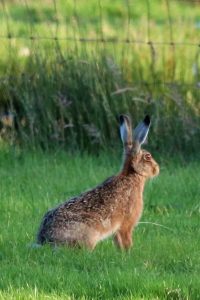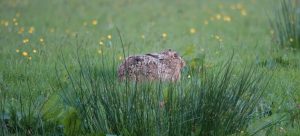I spent a lovely day in the Trough of Bowland yesterday. It’s been far too long since I last spent any time there and yesterday was such a pleasant temperature I found myself doing something that I often fail to do…being still. I spent quite a few moments just sittings, watching and listening. Not necessarily with anything in mind other than just taking it all in, sights, sounds and smells.
Sitting still, even just for a moment isn’t something that comes naturally to many of us these days. We live in a world in which we are constantly bombarded with messages telling us that our lives would be so much better if we did things differently, invariably this involves spending money or living a life so hectic that burnout is sure to follow. The truth of it is that we would all be so much better off if we just spent a little time being still. It doesn’t have to involve being still in nature but if it does then the benefits will be increased massively.
I have spent a large part of my life struggling with my mental health and the one constant that has always been there to help me through (other than my amazing Wife) has been the natural world. It has been said many times that ‘nature is a great healer’ and I can attest to that. I know that no matter how bad I am feeling, spending some time in or with nature will help the healing process. The benefits of any time spent in nature are massive but what does ‘spending time in nature’ actually mean?
When I think about spending time in nature, my immediate thoughts turn to jumping in the car and heading to somewhere remote or a nature reserve of some description, but it doesn’t have to. Nature is closer than you think. just open your back door and your senses and before long there will be signs that nature is all around and these change with the seasons. As I write this I have the door to my office open and I can hear a cacophony of sounds (mostly natural) including a wood pigeon cooing, jackdaws squabbling, a house sparrow raucously chirrup’ing, the jingling of a goldfinch and the melodious tones of a blackbird. Now, I know not everyone can identify the different species that you hear, the thing is, you don’t need to. Just being able to hear them is sufficient. Remember, if you can hear them, you’re still breathing and that in itself is something to be truly thankful for.
It isn’t just the birds that we can hear either, listen out for the bees, hoverflies and all the other winged creatures that make up the hum that can often be heard, particularly during the warmer months. This usually coincides with the flowering season of many plant species and can differ from season to season too. As we enter the autumn months, some species love to gather the last of the nectar from ivy to help them through hibernation.
As a species we aren’t limited to just hearing either, obviously we can smell, see and feel but often we zone out of those. If you are lucky enough to have a planted garden or have access to a local park then make the most of the spring and summer when plants are flowering and delivering a tremendous bouquet both visually and sensorily along with a freshly mown lawn. During autumn when the leaves fall, the smell of damp decaying leaves is hard to beat, it is up there with the smell of a thunderstorm as the rain hits a hot dry pavement.
Lets not forget touch. When I see cheery blossom, it takes me back to my childhood and our local recreation park. The park was divided straight down the middle by a path which was lined with cherry blossom which was a sight to behold when in full bloom. The park was also home to some great climbing trees including oak and beech, but it is the cherry blossom I remember the most. It wasn’t because the cherry was a great tree to climb, which it was, but because it was rarely climbed by anyone. If you did see someone attempt to climb it, you would quickly see that same child looking at their hands, then trying (and failing) to wipe the resin from their hands onto their shorts or trousers. Those cherry tress produced the stickiest resin I ever knew as a child. Fond memories indeed. I’m not suggesting that you should go and climb a cherry blossom (though don’t let that stop you) but there are plenty of things that we can do to physically connect with nature. Recently I’ve taken to physically hugging trees, just go up to one and hug it, feel it’s rough hard bark, the soft damp moss growing on it, it’s leaves and their veins or the stick resin that the tree produces, coniferous trees are the best for this but the aforementioned cherry is great too. Don’t have access to trees, or don’t want to be seen hugging one, why not take your shoes off and walk on the grass or dangle them in a stream!
There are so many ways in which we can connect to nature and let it into our lives without becoming a naturalist and there are so many studies which outline the benefits of doing so too. You don’t need anything, just an open mind and a willingness to be present. Just open a window/door, open your senses and open your mind.

 Despite their presence in the countryside, brown hare numbers have declined significantly due to habitat loss, modern farming practices, and predation. They are now considered a priority species for conservation in the UK. Supporting wildlife-friendly farming and leaving undisturbed areas in rural landscapes can help ensure their survival.
Despite their presence in the countryside, brown hare numbers have declined significantly due to habitat loss, modern farming practices, and predation. They are now considered a priority species for conservation in the UK. Supporting wildlife-friendly farming and leaving undisturbed areas in rural landscapes can help ensure their survival.